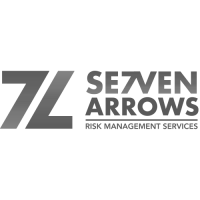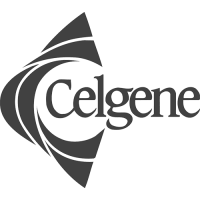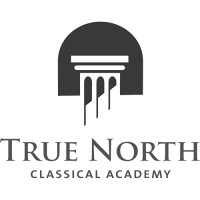Pause Power: Making your speeches sound more professional
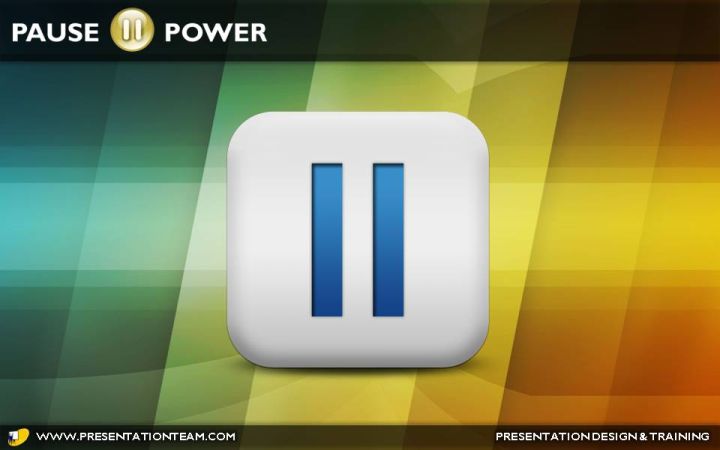
The science and strategy of using pauses in speech and speaking to add drama, impact, and power to delivery.
Discover how these small segments of silence can translate to large admiration and appreciation of audiences.
“The right word may be effective, but no word was ever as effective as a rightly timed pause.”
Mark Twain
The Pause is a verbal tool like no other. Suspense. Drama. Intrigue. Power. All promoted by the Pause.
Throughout history, the world’s great orators have known of and applied the power of the pause:
President Ronald Reagan: “Mr. Gorbachev…Tear Down this Wall!”
Clint Eastwood in the movie Sudden Impact: “Go ahead; make my day”
Oprah Winfrey: “My constant prayer for myself is to be used…in service…for the greater good.”
Or President Bill Clinton: “I did not have sex with that woman… Monica Lewinsky”
By definition, the pause is “a hesitation or a temporary suspension of an action.”
Here are four potent points for pausing:
1. A Pause can slow our speaking rate.

Many speakers try to say too much in too short a time. Consequently they speak quickly, trying to fit everything into the allotted time. If you find yourself speaking too quickly, pause at the end of a sentence and take a breath. If you feel in need of a breath, your listeners or audience probably do too. Pause Power.
Like punctuation marks in writing, pausing punctuates our messages. When we pause we’re telling the audience that what we’ve just said is important. The pause doesn’t have to be long. Even two seconds can be a powerful way of emphasizing your message.
And yet the Pause is so under-used in today’s rapid-fire immediate feedback society. Fearful that our audience will become bored or disengaged if there’s a lull in conversation, people speak with a continuous output of oratory. Relentless ramble. Paragraph after paragraph. But put a pause in place…and there’s peace.
2. A Pause gives us time to think.

Sometimes the inevitable happens – you forget what you were going to say next. Rather than panic, pause and collect your thoughts. When you’re not sure what you were going to say next, pausing enables you to quickly retrace your previous words in your mind and figure out what the next logical step will be.
Don’t worry that your audience may think you’ve forgotten what you were going to say. If your speech has been going well so far, they’ll be happy to wait while you collect your thoughts. The chances are they may not even notice. Once you’ve started speaking again, the original statement often returns to your mind.
3. A pause is more powerful than um and ah
Often we listen to a speaker with an interesting message, only to be distracted by constant ums and ahs. Sometimes it’s a sign of nervousness, sometimes it’s a sign of laziness. Often the speaker isn’t aware they’re doing it. Fillers such as um and ah can become a bad habit. As Toastmasters, we are groomed to listen for these fillers…and eliminate them in dialogue. But they’re everywhere! Celebrities, politicians, friends and family…kinda, you know, uhh..add these ah filers when they don’t know what to say. Silence is a stronger filler than those two silly words. So we’re at a loss for words, stay silent.
4: A Pause can add Depth, Drama and Dimension to a talk.
Say it slowly…and with a pause….and the audience will listen with greater intrigue and interest. Let the message sink-in. Engage eye-contact during the delay. These are the subtle effects of a pause. A speech that’s short on time, can likely be amplified and extended by a well-placed powerful pause.
Notice that term “Well-placed.” I recently delivered a speech about Achieving Greatness through Quotations.” The talk was generally well-received …except for one critical listener who noted that my pauses were “unsubstantial.” “Kevin,” he said, “you were simply pausing to gather your thoughts.” Pauses…he went on to say, should be perfectly placed…and terrifically timed.
Consider Placement, Impact, and Implications with The Pause.
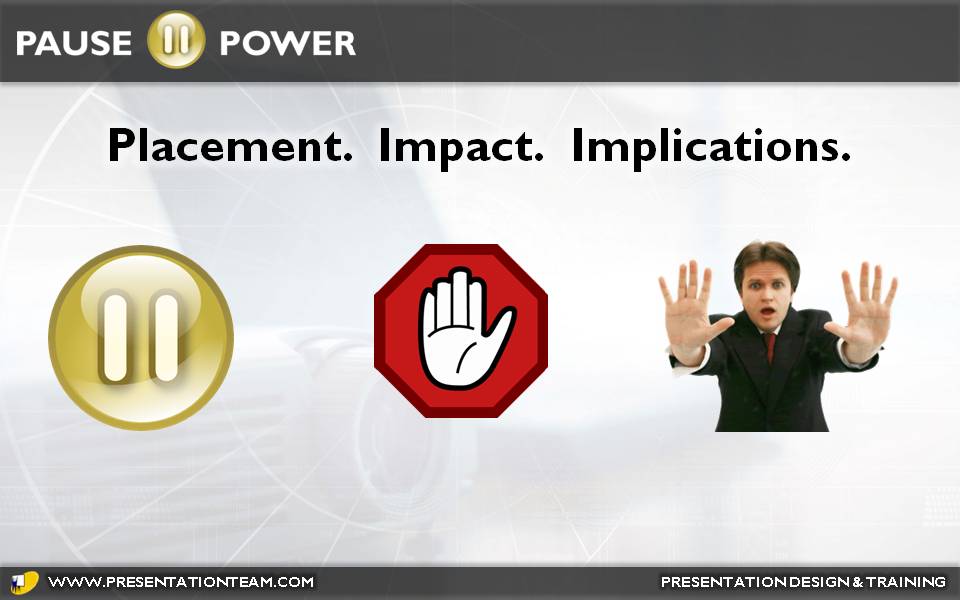
Pay extra attention to the placement, impact, and implications of the Pause
Indeed, as communicators, we should pay extra attention to the placement, impact, and implications of the Pause. Not only as we write our words and assemble our oratories…but in everyday conversation and interaction. Those small segments of silence can translate to large admiration and appreciation of audiences…who- whether they’re aware of it or not- might hear an otherwise ordinary talk as extraordinary. And that is true Pause Power.
Kevin Lerner is a presentation consultant and expert on presentation design and delivery. His firm, The Presentation Team, has helped hundreds of companies and individuals to create world-class presentations.
Crutch Words, Improvement, Pauses, public speaking, Speech, Toastmasters, Verbal Tools

